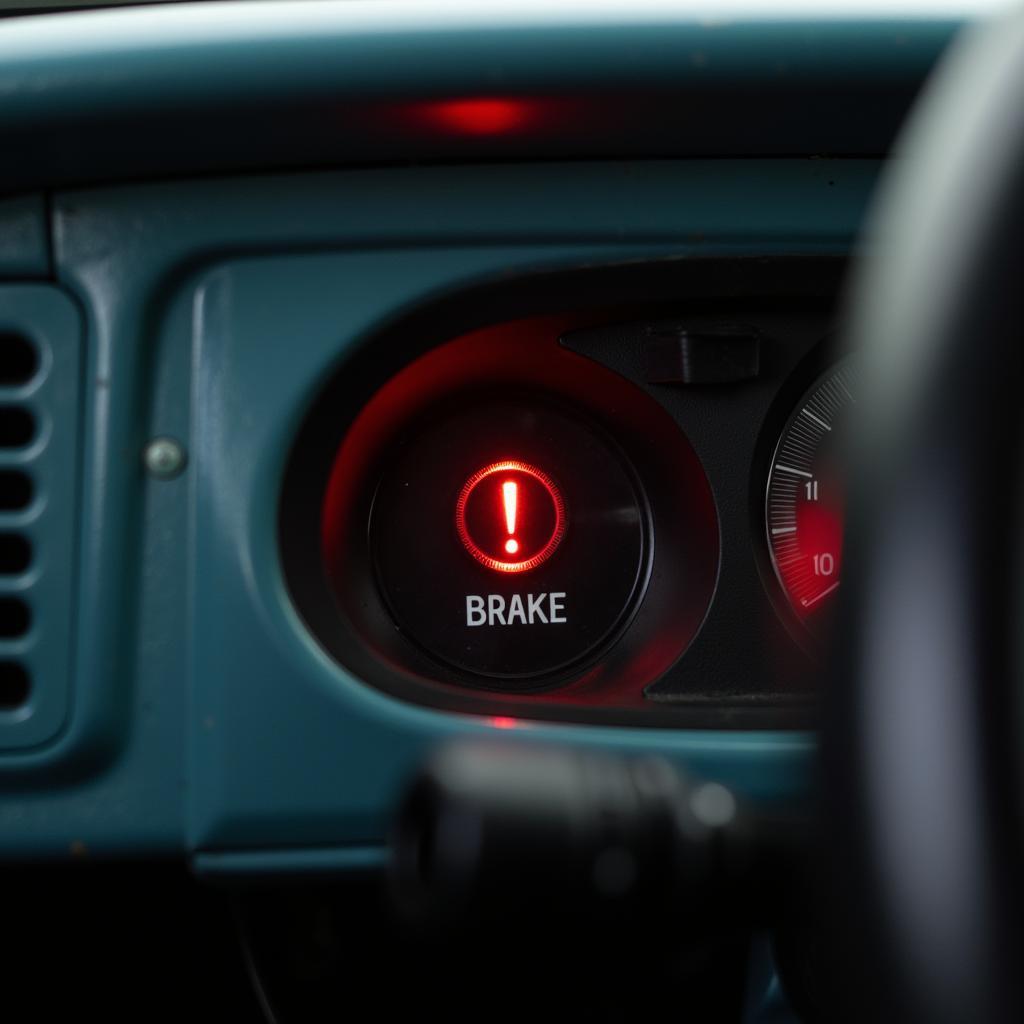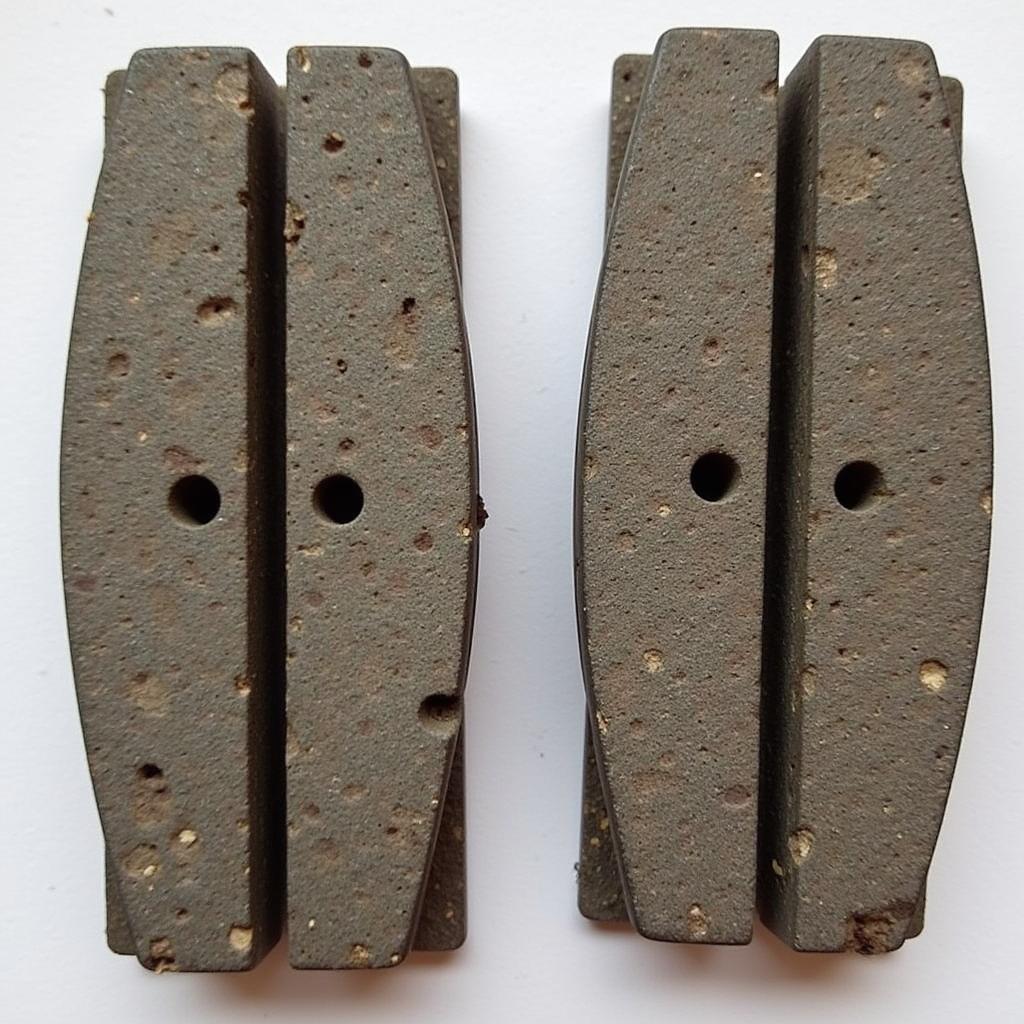A glowing brake warning light on your VW bus dashboard is a clear sign that something’s not right with your braking system and requires immediate attention. Ignoring this warning could lead to brake failure, putting you and others at risk.
This comprehensive guide will walk you through the common causes of a brake warning light in VW buses and provide troubleshooting steps to help you diagnose and potentially resolve the issue.
Understanding Your VW Bus Brake Warning Light
The brake warning light, often symbolized by a red circle with an exclamation mark (!) or the word “BRAKE,” serves as your vehicle’s primary indicator of brake system malfunctions. When illuminated, it signifies one or more of the following:
-
Low Brake Fluid: This is the most common culprit. Brake fluid is the lifeblood of your hydraulic braking system. A leak in the system or worn brake pads can lead to low fluid levels, triggering the warning light.
-
Worn Brake Pads: Brake pads are designed to wear down over time. When they reach a certain thinness, a sensor within the brake pad will activate the warning light, indicating it’s time for a replacement.
-
Faulty Brake Light Switch: Your brake lights and brake warning light often share the same switch. A malfunctioning brake light switch can disrupt the circuit, causing the warning light to illuminate even if the braking system itself is functioning correctly.
-
ABS Issue: If your VW bus is equipped with an Anti-lock Braking System (ABS), the warning light might point towards a problem with the ABS module, wheel speed sensors, or related wiring.
-
Parking Brake Engaged: While seemingly obvious, sometimes the simplest explanation is the most likely. If your parking brake is even slightly engaged, it can trigger the warning light.
 VW Bus Brake Warning Light
VW Bus Brake Warning Light
Troubleshooting a Brake Warning Light on a VW Bus
Before you begin, remember that safety is paramount. If you’re uncomfortable working on your vehicle’s braking system, consult a qualified mechanic immediately.
1. Check Your Parking Brake: Start with the simplest solution. Ensure your parking brake is fully disengaged.
2. Inspect Brake Fluid Level: Locate your brake fluid reservoir (refer to your owner’s manual if needed) and check the fluid level. If it’s below the “MIN” mark, add the appropriate brake fluid (DOT 3 or DOT 4 as specified by the manufacturer).
3. Look for Leaks: A drop in brake fluid level usually indicates a leak. Carefully examine the brake lines, hoses, calipers, and wheel cylinders for any signs of wetness or dripping fluid.
4. Examine Brake Pads: If your brake fluid level is adequate and you haven’t noticed any leaks, the next step is to inspect your brake pads. You’ll need to remove a wheel to get a good look. If the pads are worn thin (less than 1/4 inch of friction material), it’s time for new ones.
 Worn Brake Pads VW Bus
Worn Brake Pads VW Bus
5. Test Your Brake Lights: Have a friend or family member press the brake pedal while you stand behind the vehicle. Ensure all brake lights, including the high-mounted brake light, are working correctly. If not, the brake light switch might be the culprit.
When to Call a Professional
While these troubleshooting steps can help identify common issues, some problems require specialized tools and expertise. If you experience any of the following, seek professional help immediately:
- You notice brake fluid leaking but can’t pinpoint the source.
- Your brake pedal feels spongy or goes all the way to the floor.
- You hear grinding or squealing noises when braking.
- Your vehicle pulls to one side when braking.
- You suspect an issue with your ABS system.
Preventing Future Brake Problems
Regular maintenance is key to a healthy braking system and your overall safety. Here are some preventive measures:
- Regular Brake Inspections: Have your brakes inspected at least once a year or every 12,000 miles, whichever comes first.
- Timely Brake Fluid Flushes: Brake fluid can absorb moisture over time, reducing its effectiveness. It’s recommended to flush your brake fluid every 2 years or 24,000 miles.
- Quality Brake Pads: Invest in high-quality brake pads that offer optimal performance and longevity.
- Address Issues Promptly: Don’t ignore warning signs like a soft brake pedal or unusual noises.
Remember, a properly functioning brake system is crucial for your safety and the safety of others on the road. By understanding the common causes of a brake warning light and taking proactive steps to address them, you can enjoy worry-free driving in your trusty VW bus.
